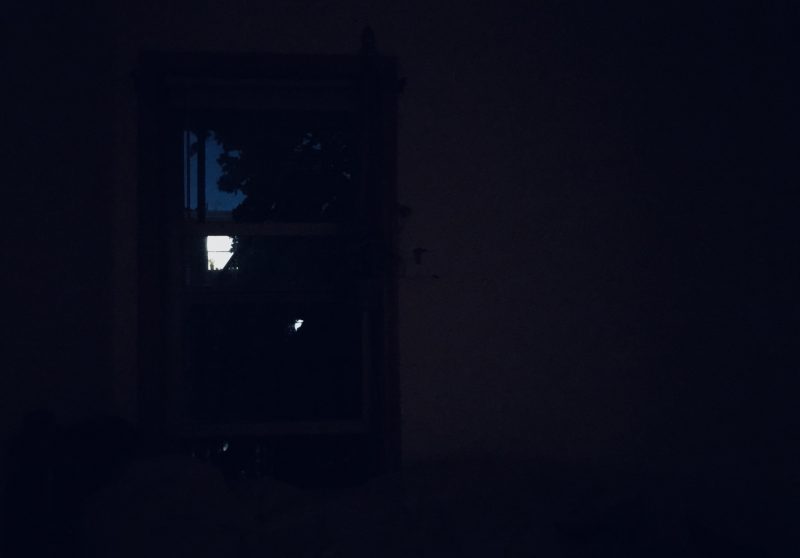reflections on becoming-with
Posted on November 1, 2021“Do not think that time simply flies away. Do not understand “flying” as the only function of time. If time simply flew away, a separation would exist between you and time. So if you understand time as only passing, then you do not understand the time being. To grasp this truly, every being that exists in the entire world is linked together as moments in time, and at the same time they exist as individual moments of time. Because all moments are the time being, they are your time being.”
– Ruth Ozeki, A Tale for the Time Being
One thought flowed into my mind with ease, followed by another. They traveled like beads strung through an untied piece of string, in through one end and out through the other. I knew the thought momentarily and then it vanished. As I slowly regained a state of wakefulness, I became aware of the fact that I had drifted off into an unplanned nap. I opened my eyes and scanned a dark, indistinguishable room. Where was I?
My body felt like it was in India. There was a pang of anxiety in my chest – I knew the drill. I needed to complete some math homework before my mother called me for dinner. My mother – I could see her in my mind’s eye but I couldn’t hear her bustling about the kitchen outside my room.
“I must be in California then,” I thought. It’s probably another endless day in quarantine, but I couldn’t hear any cars outside my roadside apartment.
I scanned the room apprehensively, there was a window in front of me. I’ve never woken up to a window in front of me before. Where was I? Which “I” was I waking up as? I hurried to prop myself up on my bed and found the seat of an armchair underneath me instead. Ah, the armchair I found on the street. I’m in Brooklyn, NY.
I’ve experienced this form of post-sleep disorientation before, mostly during my travels between countries, where I have had to reorient myself in terms of space or location. During these moments, time felt caught up to the present – I was simply reorienting the present person, in the present timeline in space. However, something about the process was different this time around. I distinctly felt like I had woken up at a different point in time, not just in a momentarily unknown space. For those microseconds, I had fully embodied an older version of myself. Time beyond that moment did not exist, my present reality had never happened.
For an experience that probably lasted under three seconds, I noticed myself carrying some residual anxiety with me into the next day. It was a feeling of strange disembodiment that came with having to situate myself into this specific place, time, and being [2]. Some essential part of my being seemed to no longer truly be with or within me. It was somewhere outside of my consciousness, waiting to be re-formed.

———
In her book, Staying with the Trouble, Donna Haraway describes the notion of becoming-with one another as the act of “passing patterns back and forth, giving and receiving, patterning, holding the unasked-for pattern in one’s hands” [1]. While Haraway emphasizes “becoming-with” as a phenomenon that is especially important between “companion species” or “ontologically heterogeneous partners,” I recognize that this is a crucial way in which humans form their identities [1]. Parts of our identities and how we traverse the world are dependent on our interactions with other beings and things. Haraway writes, “species of all kinds are consequent upon worldly subject- and object-shaping entanglements” [1].
As I sit here at my desk, re-reading the concept of becoming-with, I can sense that I no longer embody the parts of my identity that I had built through interactions with others as strongly anymore. That identity, made up of old memories and past interactions, had been created in companionship with my “kin” — family and friends that I have not physically seen in three years.
It is clear that in the wake of over a year of COVID-related isolation and isolation-related grief, I must now re-learn how to relate with other beings by paying close attention to how I want to relate to other beings and things.
Parts of me feel disembodied because I have been operating on memories of who I had been before the pandemic, of how I used to show up for myself and others. Without my kin to help me re-calibrate or even exercise my relational identity during periods of quarantine, I am not entirely certain of who I have been trying to situate in NYC.
Nevertheless, with a new program of study, a new city, and renewed knowledge of who/what can become my new kin or oddkin (other-than-conventional biogenetic relatives), I have been equipped with a unique opportunity to intentionally “re-member, to com-memorate,” and “actively reprise, revive, retake, recuperate” these parts of my identity [1].
r
———
[1] Haraway, D. J. (2016). Staying with the trouble: Making kin in the chthulucene. Duke University Press.
[2] Haraway, Donna Jeanne. Situated Knowledges: The Science Question in Feminism and the Privilege of Partial Perspective.
OZEKI, R. (2022). TALE FOR THE TIME BEING. S.l.: CANONGATE CANONS.
Proust, M. (2020). Swann’s Way: In Search of Lost Time, Vol. 1 by Marcel Proust. Independently published.